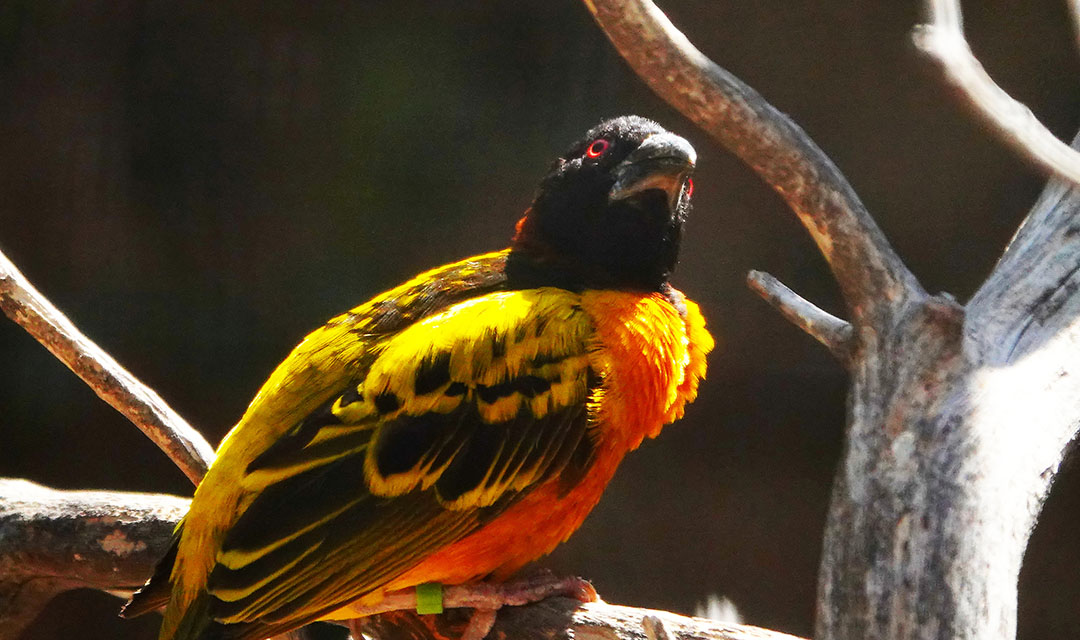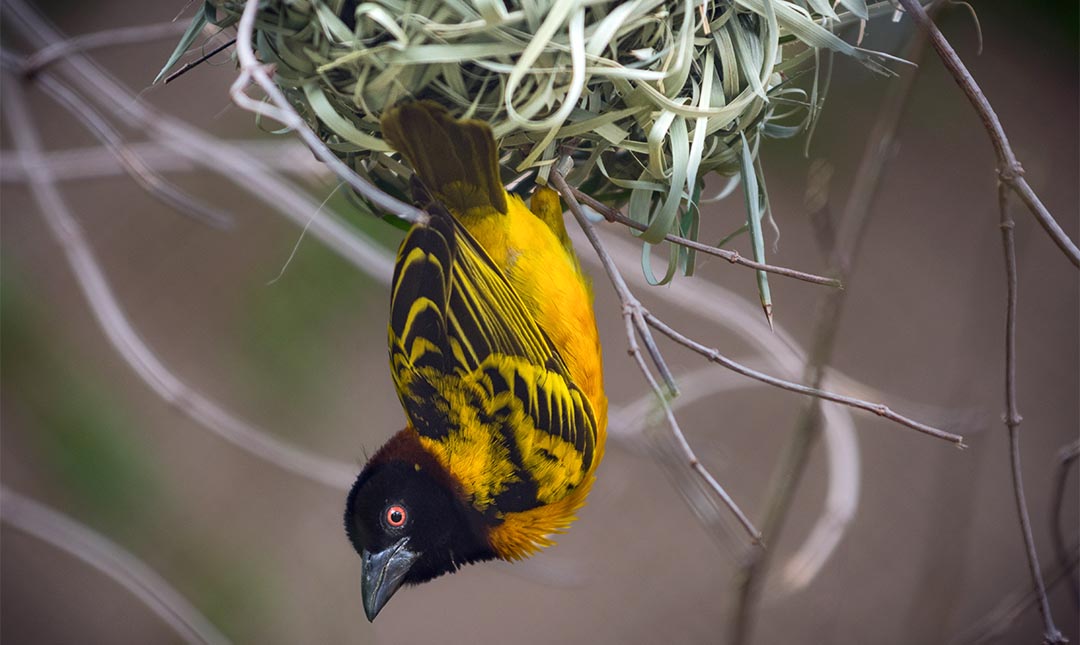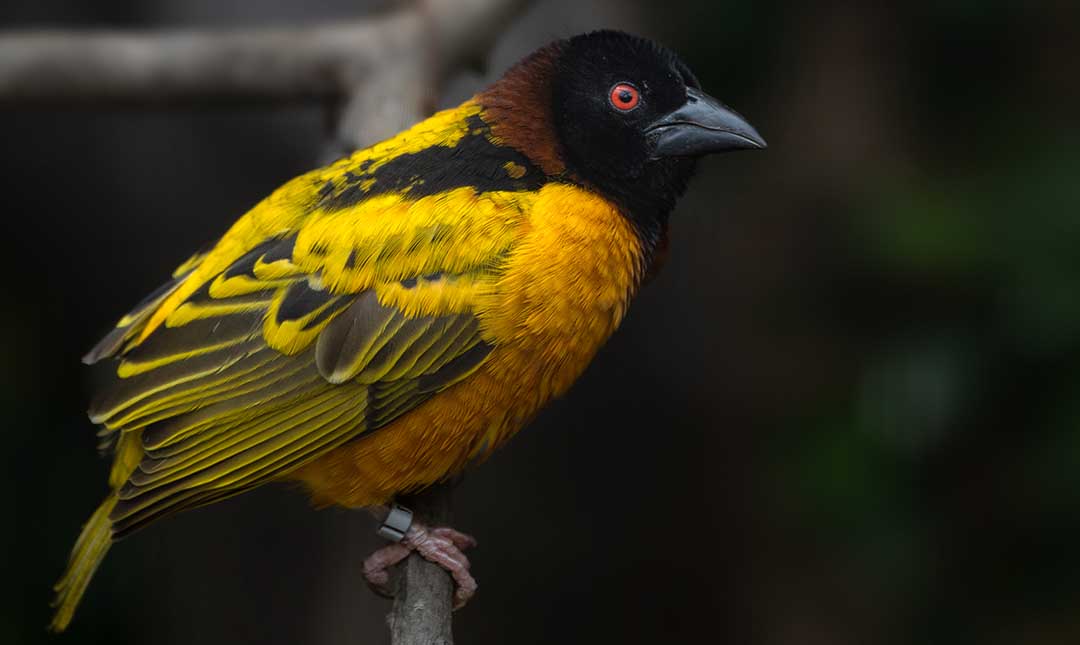About
Black-headed weavers are known for their intricately woven spherical nests crafted from hundreds of blades of grass, reeds, or palm fronds. Weavers are very noisy and highly social. They live in colonies, so a hundred nests may dangle from a single tree. They are also called village weavers since they are often found near rural settlements in Africa. Some birds construct nests in the eaves of houses.
Only male birds construct nests, and they are not complete until a female signals her approval. A male bird may have to destroy and rebuild the nest up to five times before a female is satisfied. Using his strong, cone-shaped beak to cut blades of grass, the male ties knots with his feet and beak to make the structure more secure. The nest hangs from a tree branch with an entrance at the bottom to make it harder for predators, such as snakes, to enter. Once the nest is completed, the male hangs upside-down beneath it and displays, singing and flapping. If a female accepts his invitation and moves in, she lays two to four eggs that will hatch in 12–13 days. The chicks are ready to fledge in about three weeks. Females may lay two or three clutches a year. Males are polygamous with several partners. You can usually see several nests in various stages of completion in the weaver habitat at the Zoo.
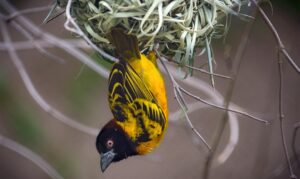
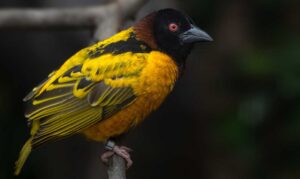
HABITAT
These birds are widely distributed across most of Africa south of the Sahara Desert. They are often found in woodlands, parks, and rural villages and prefer to be close to water.
DIET
Seeds and insects, with the proportion of insects increasing during the nesting season.
PHYSICAL CHARACTERISTICS
Adult bodies are six to seven inches long. They weigh just over one ounce. During the breeding season, the males are brightly colored, with black heads, bright yellow bodies, and brownish wing and tail feathers. Out of the breeding season, the colors are more muted. Both sexes have red eyes. Lifespan is estimated at 15–20 years.
LOCATION within the zoo
You’ll find this bird in the Animals of the Drylands section. See Zoo Map.

